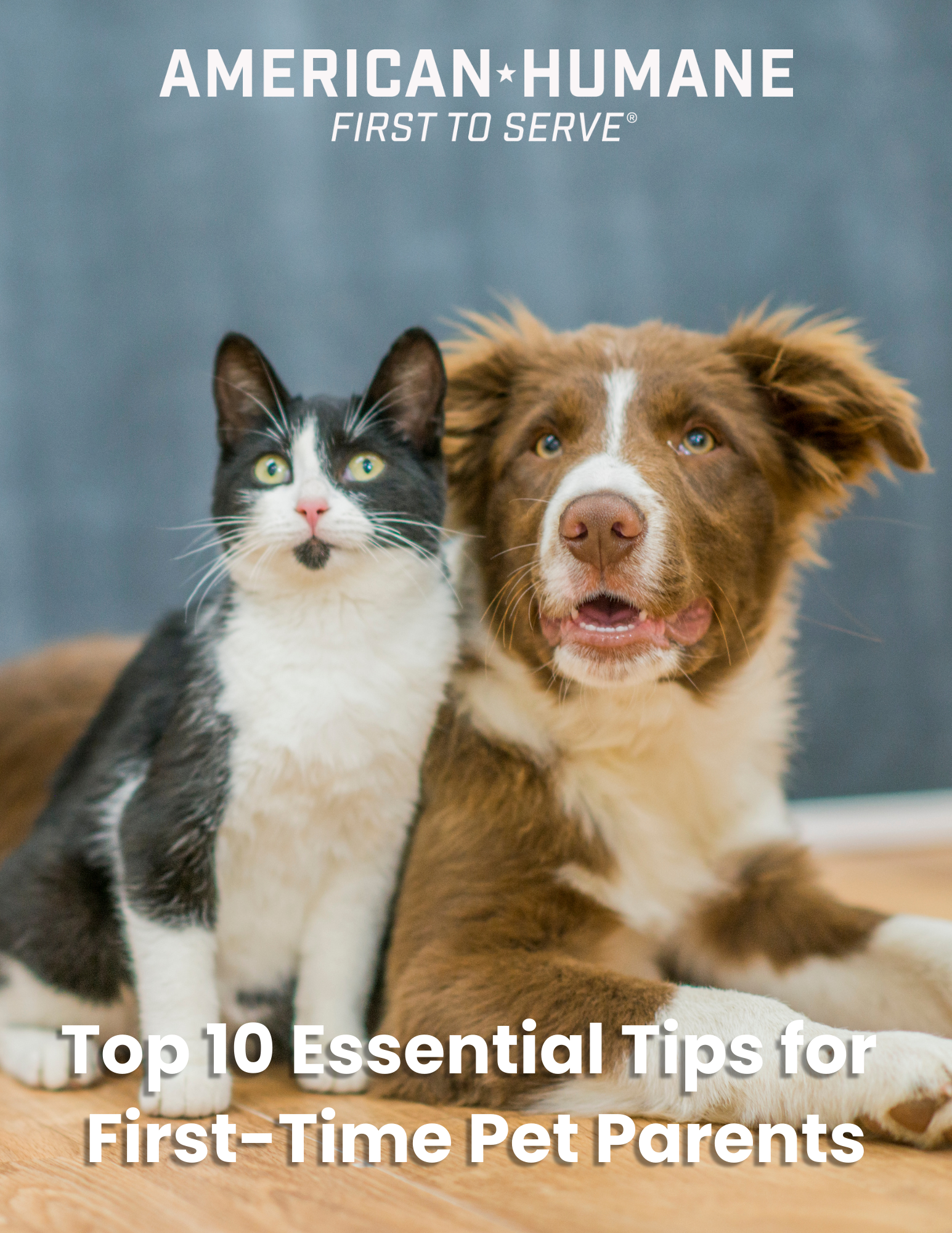
It’s very common for families to want to add companion animals to their home, especially if they have children. However, some homes are small, and some families may not have time to care for a dog or may include members who are allergic to dogs — making cats a common (and wonderful!) choice.
Adult or Kitten?
If you are considering adopting a cat, you may think you should get a kitten so your child and the kitty can grow up together. While this may sound like a nice idea, American Humane recommends that homes with children choose adult cats instead. You might be disappointed by this, but keep in mind that 8-week-old kittens will essentially be adults in less than a year.
Additionally, young children tend to be very active and may be too rough with fragile kittens, which can result in injuries to the kitty and/or a fearful, skittish adult cat. Similarly, young kittens have particularly sharp teeth and claws, which can accidentally injure delicate young children.
For all these reasons, cats over 2 or 3 years old are best for kids under age 5 or 6.
Choosing a Cat
Animal shelters are great places to find a wide variety of adult cats. Although it is very tempting, avoid choosing a cat based on looks alone.
- First, visit a shelter and meet several cats so you can get to know a variety of feline personalities.
- Once you have selected a few cats that you like, the next step is to have your child meet the cats (you may want to do this in more than one shelter visit).
Introductions
Begin by setting up both the cat and the child for success. Demonstrate to your child how to appropriately meet a cat:
- Hold out one finger and allow the cat to sniff it. If she tries to rub your finger, that is a great sign! If she backs away or hisses, she is not comfortable. Never force a cat into a situation she isn’t comfortable with — this could spell disaster for the cat and the human.
- Scratch interested kitties all over the head, neck and chin, and then along her back. If she remains relaxed and interested, gently place one hand under her belly and slowly pick up her front feet off the floor.
- If she remains relaxed, gently continue to pick her up as your other hand supports her back legs. Hold her securely against your body as you support her feet, and continue scratching her head.
- Have your child sit quietly on the floor or in a chair as you gently place the cat in his or her lap. Encourage your child to gently scratch the cat’s head and back.
More Tips for Meeting Cats
- If the cat becomes uncomfortable or demonstrates “unhappy” body language at any time, gently but quickly set her down or allow her to get down on her own.
- Most cats do not like to be held for long periods of time, so do not expect her to tolerate it.
- Many cats do not like to have their bellies rubbed, so encourage children to avoid this.
- Do not allow children to grab at, squeeze or carry cats like footballs — cats can become injured or scared, which is dangerous for everyone involved.
- Unlike a dog, when a cat is wagging her tail, this may indicate that she is irritated.
- If a cat flattens her ears, she is unhappy and may strike out.
A Word on Toxoplasmosis
If you are pregnant and you have a cat, toxoplasmosis is probably something you have heard about. Before you part with your feline friend, however, American Humane would like to tell you a bit about this disease.
Toxoplasmosis is a parasitic disease that can be transmitted to humans (and other animals) by ingesting infected cat feces, consuming raw or undercooked infected meat, or ingesting contaminated water. To acquire the disease, the host cat must consume raw meat or live animals that are infected with toxoplasmosis. Once infected, the cat can spread the disease for only a few weeks. Further, in order to be infective, the contaminated feces must remain in the litter box for several days, and then be ingested by the pregnant woman.
If the disease is contracted, infected people may feel as if they have the flu, with swollen lymph glands or muscle aches and pains that last a month or more. Severe toxoplasmosis can cause damage to the brain, eyes or other organs — infants born to mothers who are newly infected during or just before pregnancy are among those most likely to develop severe toxoplasmosis.
As scary as this disease may sound, there is no need to give up your cat!
Here are some ways to keep yourself and your baby safe:
- Prevent your cat’s exposure to infected rodents by keeping her indoors.
- Give the job of cleaning the litter box to another family member or friend whenever possible.
- If you must scoop the box yourself, wear rubber gloves and a surgical mask.
- Make sure the litter box is scooped daily and feces are put directly into the toilet.
- Wash or sanitize hands often — and immediately after scooping.
- Freeze meat for a few days and cook it thoroughly.
- Peel and wash all fruits and vegetables.
- Sanitize cutting boards, counters, utensils and hands after contact with meat or unwashed fruits and veggies.
- Wear gloves to garden, and wash hands after gardening.

